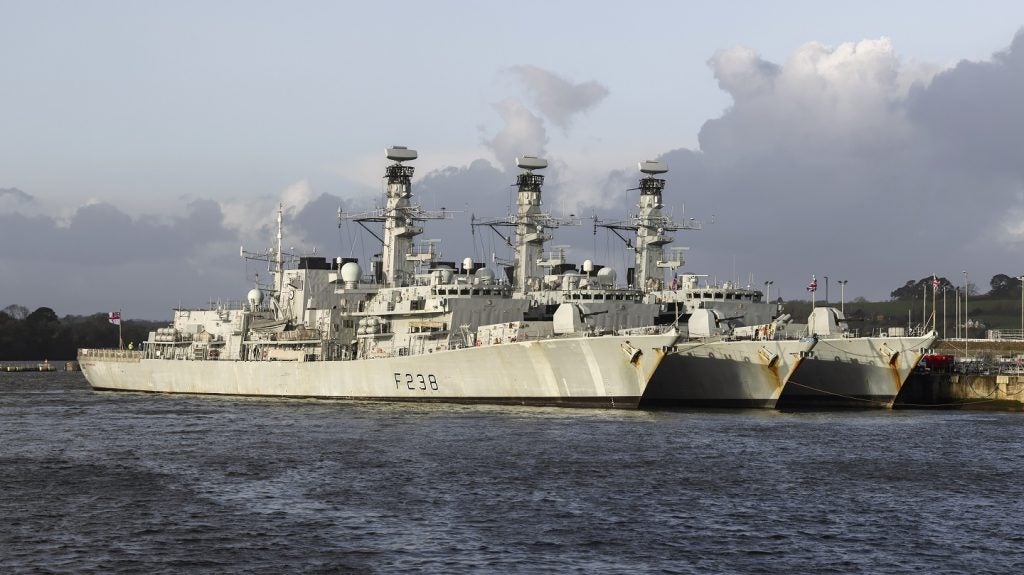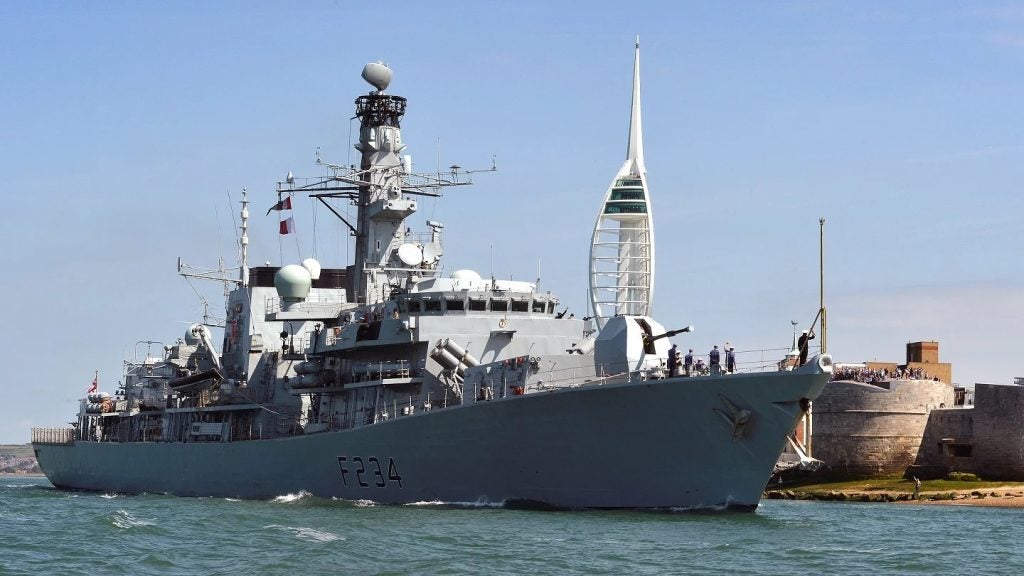
The Royal Navy Type 23 frigate HMS St Albans has returned to sea to complete sea trials after the conclusion of the vessel’s 55-month-long refit period at Babcock’s Devonport Royal Dockyard, during which it required some 350 structural inserts and 5,500 steel repairs.
According to a release from the UK Ministry of Defence’s (MoD) Defence Equipment and Support, the inserts and steel repairs required 4.5km of welding in order to ensure HMS St Albans met Lloyds Register certification and could be returned to operations.
The frigate is one of a number of Type 23 class undergoing service life extension (LIFEX), recertification, or upkeep work at Babcock’s frigate halls at Devonport. Structural inserts typically remove degraded or rusted sections of hull or the ship’s superstructure, ranging in size from a small hand-sized plate to large panels.
HMS St Albans is the second Type 23 frigate to complete the Power Generation and Machinery Control Upgrade (PGMU), which has seen the replacement of all four diesel engines and generators, both motor-generator sets as well as “substantial changes and improvements” to switchboards and cooling systems.

The Royal Navy frigate has also received the Sea Ceptor air defence system, improved sonar (S2150) and navigation radar (R1084) systems as well as upgrades to other combat, compass, communications, and sensor systems. Most of these upgrades are already fitted to current, older, Type 23 frigates.
The DE&S release stated that HMS St Albans upgrade programme built on the experience developed during work carried out on is sister ship HMS Richmond, which would “drive a considerable improvement in performance and resilience” of the vessel.
HMS St Albans will now commence its sea trials and UK-based training before returning to the Royal Navy later in the Spring, DE&S stated. The newest of the Type 23 frigate having been commissioned into service in 2002, the vessel is planned to leave service in 2035.
Growing difficulty in maintaining the Type 23 frigates
It has previously been reported that the UK Type 23 frigate HMS Sutherland required around 600 structural inserts during the vessel’s extensive upkeep programme currently being carried out at Babcock’s Royal Naval Dockyard located inside HMNB Devonport.
Another Type 23 frigate, HMS Iron Duke, required more than 1,000 structural inserts during its own upkeep process.
During an early-February press tour of Babcock’s Royal Dockyard, a number of Type 23 frigates, including HMS St Albans, were seen at various stages of their refit process.
However, it has been previusly reported by Naval Technology that the overall length of time that a Type 23 frigate is spending in refit and refurbishment programmes is increasing, as the fleet ages and becomes more difficult to maintain. Each ship of the class was originally intended to have an 18-year service life before replacement, but this has been extended through a series of refits.

From 2011-2017 each of the then 13 Type 23 frigates underwent a LIFEX or refit period, with the duration of each programme ranging from 12 months up to 36 months. From 2018 onwards the figures increase, with the first three vessels to undergo earlier work returned to the shipyards for between 37-49 months.
The refit of HMS St Albans, at more than four-and-a-half years, is an outlier, and the longest time a Type 23 frigate has been in refurbishment.
In line with vessel class certification rules, the out-of-service date of warships can be extended for a maximum of six years following completion of each upkeep maintenance programme.
The cost to refit and maintain the ageing class is also a factor, with HMS Iron Duke’s 2023 refit costing more than £100m over a 52-month period. By comparison, in the financial year 2023-24, £100m was allocated for Type 23 refits.
Although the Type 23 frigates are being upgraded and sustained until their replacement Type 26 and Type 31 frigates come online, it is likely that more of the ageing warships could depart, with the fate of HMS Westminster, with the vessel widely reported in 2023 to be in poor material condition.




